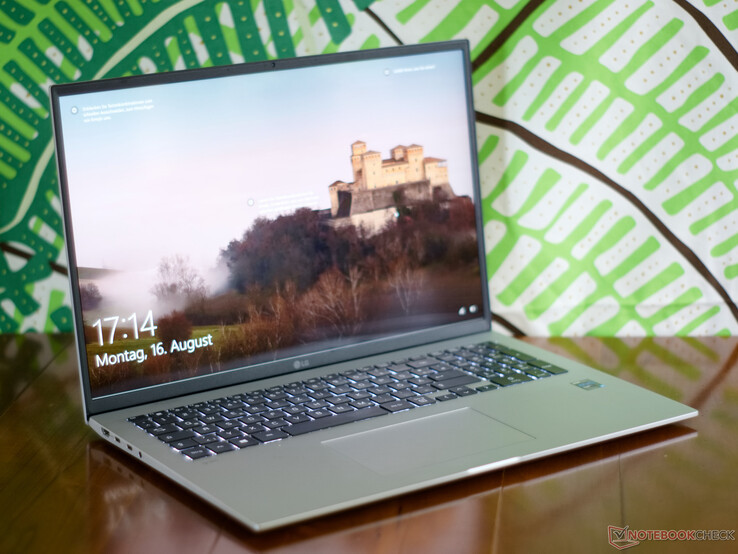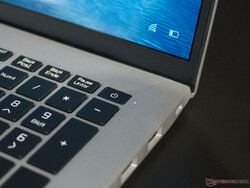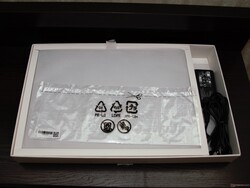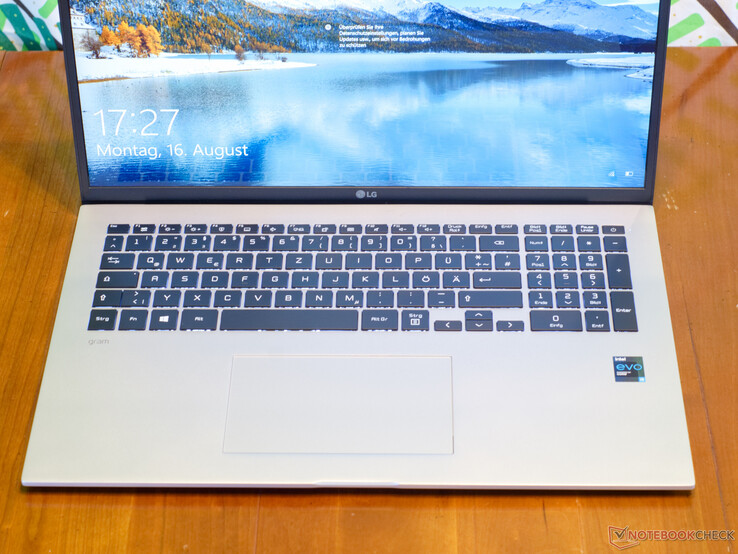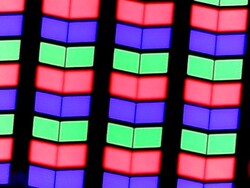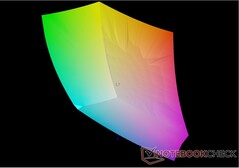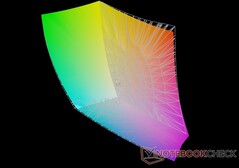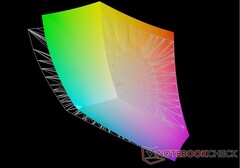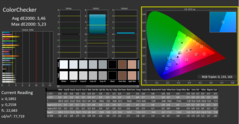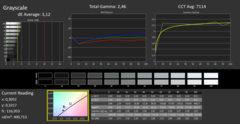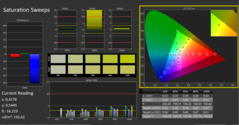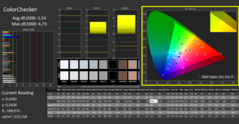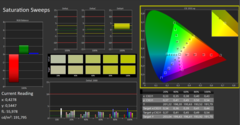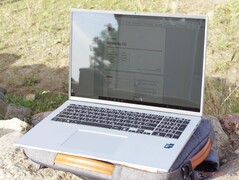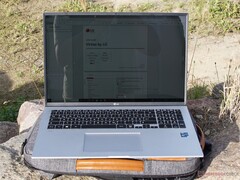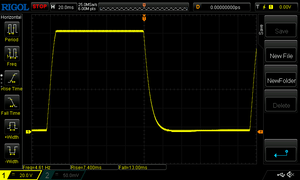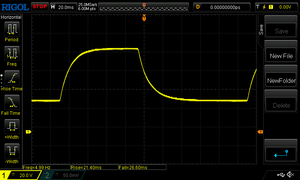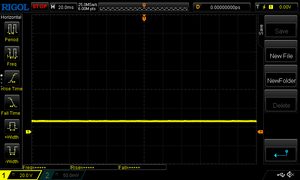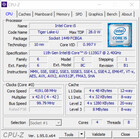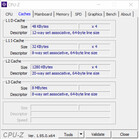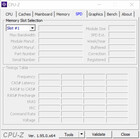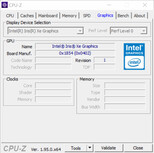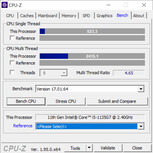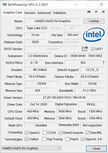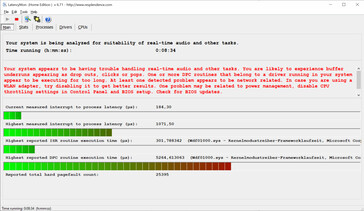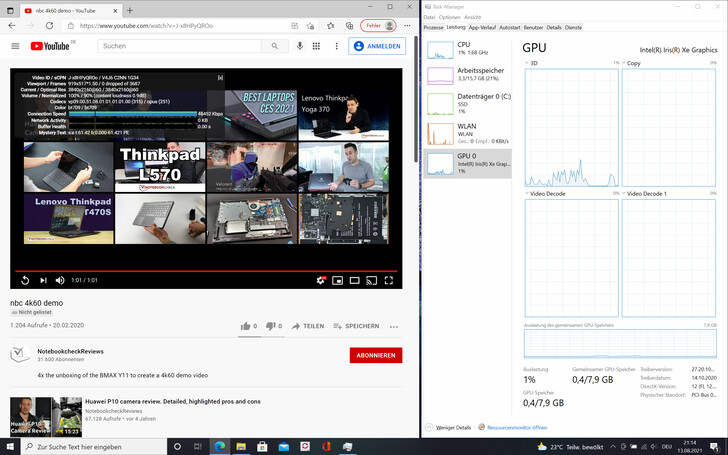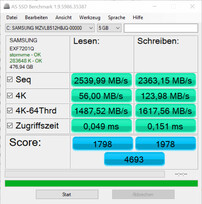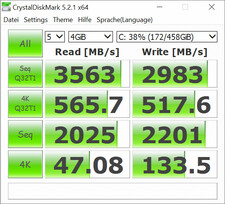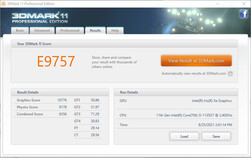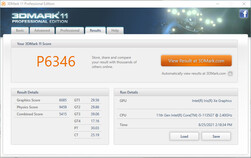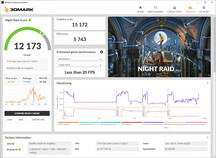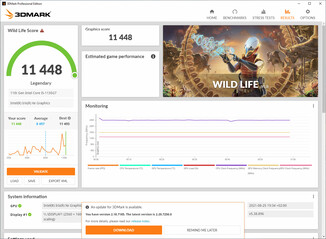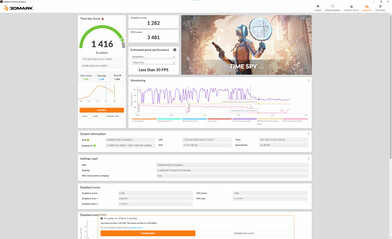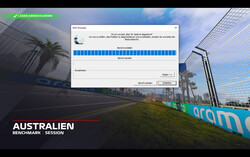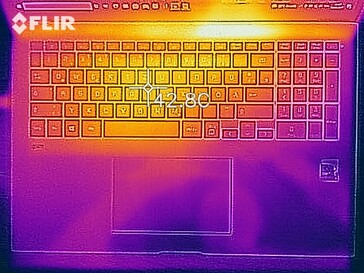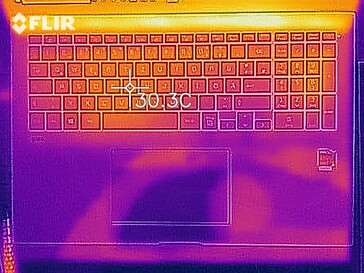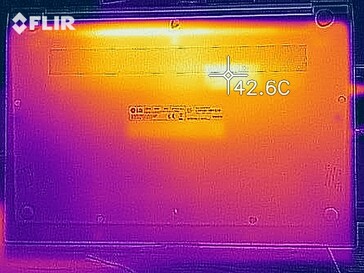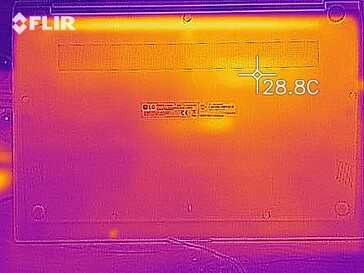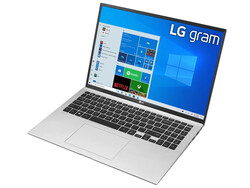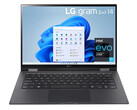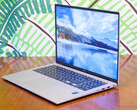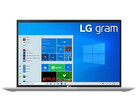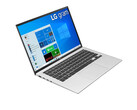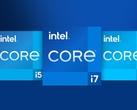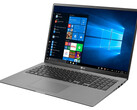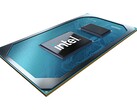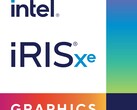LG Gram 17Z90P review: Flexible lightweight with a 16:10 display

The LG Gram series stands for particularly light and compact laptops. With its 1350 grams (~3 lb), the LG Gram 17 falls slightly outside of our benchmark database. The 17-inch laptop in the 16:10 format beats many significantly smaller laptops in terms of its low weight. At the same time, the LG Gram 17 brings sufficient performance for more than the everyday tasks in the office.
Compared to the predecessor, the processor and design were updated. Together with the new Tiger Lake processor, there are also some significant updates such as PCIe 4 and Thunderbolt 4.
Laptops for the office and everyday tasks are rare in this size and class. As comparison devices, we therefore have to use the much heavier Lenovo V17-IIL, the Asus VivoBook 17, the Acer Aspire 5 A517, and the HP 17.
Possible Competitors in Comparison
Rating | Date | Model | Weight | Height | Size | Resolution | Price |
|---|---|---|---|---|---|---|---|
| 86.7 % v7 (old) | 09 / 2021 | LG Gram 17Z90P-G.AA56G i5-1135G7, Iris Xe G7 80EUs | 1.4 kg | 17.8 mm | 17.00" | 2560x1600 | |
| 86 % v7 (old) | 04 / 2021 | Huawei MateBook D 16-53011VFJ R5 4600H, Vega 6 | 1.7 kg | 18.4 mm | 16.10" | 1920x1080 | |
| 84.1 % v7 (old) | 03 / 2021 | Honor MagicBook Pro 10210U i5-10210U, GeForce MX350 | 1.7 kg | 16.9 mm | 16.10" | 1920x1080 | |
| 80 % v7 (old) | 05 / 2021 | Lenovo V17-IIL 82GX008TGE i3-1005G1, UHD Graphics G1 (Ice Lake 32 EU) | 2.2 kg | 19.9 mm | 17.30" | 1920x1080 | |
| 82.7 % v7 (old) | 03 / 2021 | Acer Aspire 5 A517-52G-79Z5 i7-1165G7, GeForce MX350 | 2.2 kg | 19.9 mm | 17.30" | 1920x1080 | |
| 82.4 % v7 (old) | 08 / 2021 | HP Envy 17-cg i5-1135G7, GeForce MX450 | 2.7 kg | 19.3 mm | 17.30" | 1920x1080 | |
| 78.6 % v7 (old) | 11 / 2020 | HP 17-ca1149ng R5 3500U, Vega 8 | 2.5 kg | 24.5 mm | 17.30" | 1920x1080 | |
| 77 % v7 (old) | 09 / 2020 | Asus VivoBook 17 F712FA-AU518T i5-10210U, UHD Graphics 620 | 2.3 kg | 21.4 mm | 17.30" | 1920x1080 |
Case - Light metal construction from magnesium
The design of the LG Gram is kept very simple. There is hardly anything to catch your eye in the smooth surfaces and edges. Compared to the predecessor, the laptop has slightly sharper edges. The radius of each rounded corner was reduced significantly. At the same time, the connections were also moved slightly.
At first glance, you might think that the case was made from plastic. However, in reality the material consists of a lacquered magnesium alloy. The display can be opened up to a 140 degree angle, most of it using a single hand. The hinges are sturdy and the display does not wobble.
Even though the device shows a high quality of workmanship overall and there are neither gaps nor sharp edges, when holding the LG Gram 17 in the hands, it unfortunately does not offer a high-quality feel. The light metal construction demands its dues mainly in terms of the stability of the laptop. The display lid and base unit are very flexible and can be warped easily. If the laptop is not placed on a flat surface, it can even happen that it registers unintended mouse clicks. However, thanks to the magnesium alloy, the flexible device cannot be warped permanently.
In terms of the weight, the LG Gram has no competition at 1353 g (~3 lb). In addition, the laptop is also very slim for a 17-inch device. Compared to the predecessor, not much has changed in the size of the laptop.
Connection Equipment - Now with Thunderbolt 4
In contrast to its predecessors, the laptop can now only be charged using USB-C power delivery. This means that the current device has one USB less for you to use, unless you add additional hardware. However, the laptop offers two USB Type-C ports with Thunderbolt 4 and PowerDelivery on the right side. This will allow you to add ports with the corresponding docking station. The left side houses two fast USB Type-A ports and the microSD card reader.
The positioning of all the connections is well thought-out. The distances between them are sufficient so they don't hinder each other, and they are placed far enough in the back to prevent creating obstacles when using a mouse.
Card Reader
| SD Card Reader | |
| average JPG Copy Test (av. of 3 runs) | |
| LG Gram 17 17Z90N-V.AA77G (Toshiba Exceria Pro M501 microSDXC 64GB) | |
| LG Gram 17Z90P-G.AA56G (Toshiba Exceria Pro M501 microSDXC 64GB) | |
| Average of class Office (22.4 - 198.5, n=28, last 2 years) | |
| Lenovo V17-IIL 82GX008TGE | |
| maximum AS SSD Seq Read Test (1GB) | |
| LG Gram 17Z90P-G.AA56G (Toshiba Exceria Pro M501 microSDXC 64GB) | |
| LG Gram 17 17Z90N-V.AA77G (Toshiba Exceria Pro M501 microSDXC 64GB) | |
| Average of class Office (25 - 249, n=26, last 2 years) | |
| Lenovo V17-IIL 82GX008TGE | |
Communication
The Intel Wi-Fi 6 AX201 module supports connections via WLAN-AX and Bluetooth 5. The possible up and download speeds are average under optimal conditions. However, you could also connect a faster network adapter using one of the two Thunderbolt 4 ports.
Webcam
The 0.9-MP webcam of the LG Gram offers the typical image quality of current laptops. Even though the image quality is at least better than that of the predecessor, you should still use an external webcam for video conferences.
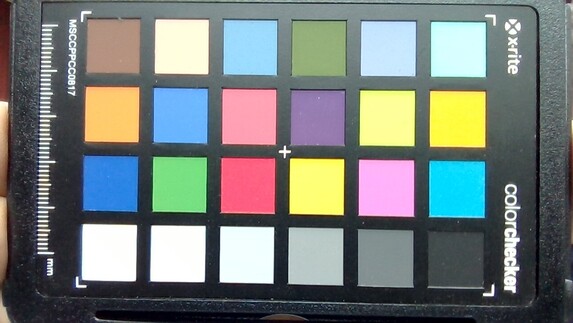
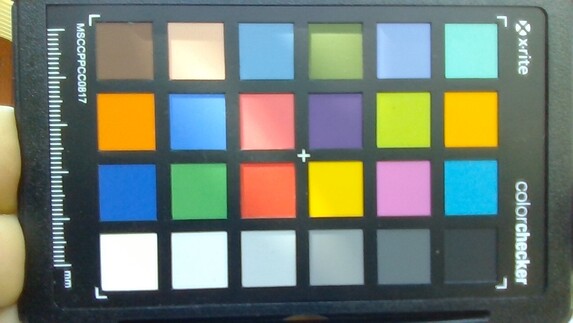
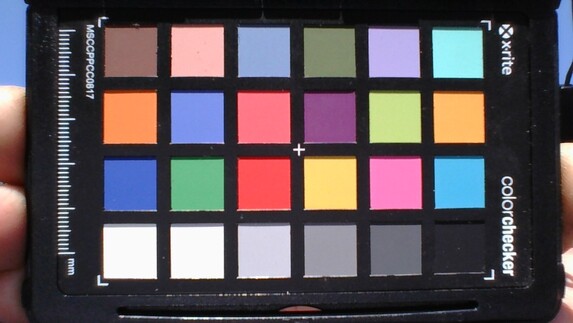
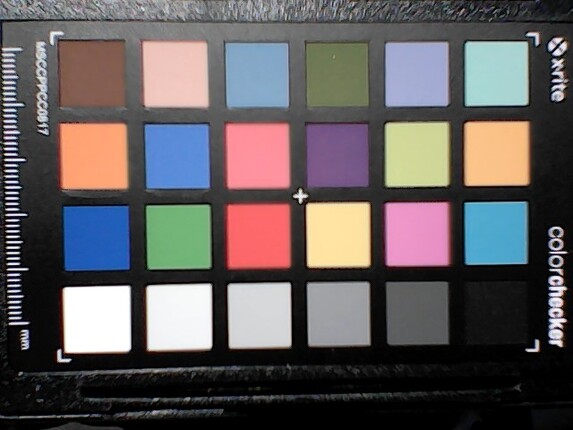
Security
With the current Intel i5 processor, the laptop offers all the TPM 2.0 and SecureBoot functions necessary for Windows 11. In addition, the LG Gram 17 provides a fingerprint reader that is integrated into the power key. There is also a slot for a cable lock on the right side of the laptop.
Accessories
Maintenance
All the case screws of the LG Gram 17 are hidden below glued-on covers or rubber feet. This does not make the laptop particularly maintenance friendly, and we were unable to remove the large rubber feet and plastic covers of our test unit without causing damage. The large rubber feet are now fastened with such powerful glue that they start to tear when you try to remove them. To avoid damaging the loaner, we therefore did not open it. According to HWinfo, the working memory is soldered in. The AX201 WLAN module is also the soldered-in version here. This means that aside from replacing the SSD and cleaning the fans inside the case, there are hardly any maintenance options. According to LG, there is also a second M.2 slot in the device, allowing you to expand the storage.
Warranty
LG offers a 24-month warranty. LG does not offer any additional warranty extensions or insurance options.
Input Devices - A full keyboard with illumination
Keyboard
The large, illuminated 100%-size keyboard of the LG Gram 17 is fairly comfortable to use for typing. Compared to the predecessor, the keys feel less spongy and have a pressure point that is more noticeable. However, we notice the lightweight construction of the keyboard again, since it also bends easily even when applying only moderate pressure.
Touchpad
Display - A 2560p resolution in the 16:10 format
The LG laptop is able to score points with the bright IPS display. The brightness of 323 cd/m² on average hardly decreases in battery operation. While the contrast value of 951:1 is slightly low, the panel shows its strengths in the resolution (2560 x 1600 pixels at 178 PPI) and the good color reproduction. The display reproduces almost the complete DisplayP3 color space. All this allows for a comfortable reading and working with the display.
There is hardly any noticeable screen bleeding, and our camera image only shows it if we use the corresponding exposure settings.
| |||||||||||||||||||||||||
Brightness Distribution: 73 %
Center on Battery: 348 cd/m²
Contrast: 951:1 (Black: 0.425 cd/m²)
ΔE ColorChecker Calman: 3.46 | ∀{0.5-29.43 Ø4.78}
ΔE Greyscale Calman: 3.12 | ∀{0.09-98 Ø5}
83.9% AdobeRGB 1998 (Argyll 3D)
98.8% sRGB (Argyll 3D)
93% Display P3 (Argyll 3D)
Gamma: 2.46
CCT: 7114 K
| LG Gram 17Z90P-G.AA56G IPS, 2560x1600, 17" | Honor MagicBook Pro 10210U Chi Mei N161HCA-EA3, IPS, 1920x1080, 16.1" | Lenovo V17-IIL 82GX008TGE AU Optronics B173HAN04.3, IPS, 1920x1080, 17.3" | Acer Aspire 5 A517-52G-79Z5 BOE084E, IPS, 1920x1080, 17.3" | HP Envy 17-cg AU Optronics AUO439D, IPS, 1920x1080, 17.3" | HP 17-ca1149ng Chi Mei CMN175E, IPS, 1920x1080, 17.3" | Asus VivoBook 17 F712FA-AU518T BOE NV173FHM-N49, IPS, 1920x1080, 17.3" | |
|---|---|---|---|---|---|---|---|
| Display | -15% | -15% | -49% | -16% | -24% | -50% | |
| Display P3 Coverage (%) | 93 | 67 -28% | 68.5 -26% | 39.98 -57% | 68 -27% | 61.4 -34% | 39.03 -58% |
| sRGB Coverage (%) | 98.8 | 99.3 1% | 97.1 -2% | 59.3 -40% | 95 -4% | 86.6 -12% | 58.4 -41% |
| AdobeRGB 1998 Coverage (%) | 83.9 | 69.2 -18% | 70.1 -16% | 41.3 -51% | 69 -18% | 62 -26% | 40.32 -52% |
| Response Times | 8% | -12% | 65% | -18% | -8% | 35% | |
| Response Time Grey 50% / Grey 80% * (ms) | 47 ? | 35.2 ? 25% | 39 ? 17% | 14 ? 70% | 40 ? 15% | 40 ? 15% | 24 ? 49% |
| Response Time Black / White * (ms) | 20 ? | 22 ? -10% | 28 ? -40% | 8 ? 60% | 30 ? -50% | 26 ? -30% | 16 ? 20% |
| PWM Frequency (Hz) | 25000 ? | 250 ? | |||||
| Screen | 30% | 1% | -6% | -3% | -7% | -43% | |
| Brightness middle (cd/m²) | 404 | 339 -16% | 330 -18% | 321 -21% | 347 -14% | 327 -19% | 288 -29% |
| Brightness (cd/m²) | 323 | 317 -2% | 309 -4% | 282 -13% | 329 2% | 287 -11% | 262 -19% |
| Brightness Distribution (%) | 73 | 86 18% | 88 21% | 81 11% | 89 22% | 80 10% | 83 14% |
| Black Level * (cd/m²) | 0.425 | 0.25 41% | 0.33 22% | 0.36 15% | 0.27 36% | 0.25 41% | 0.24 44% |
| Contrast (:1) | 951 | 1356 43% | 1000 5% | 892 -6% | 1285 35% | 1308 38% | 1200 26% |
| Colorchecker dE 2000 * | 3.46 | 0.9 74% | 2.82 18% | 4.3 -24% | 3.75 -8% | 4.03 -16% | 6.14 -77% |
| Colorchecker dE 2000 max. * | 5.23 | 2.92 44% | 6.27 -20% | 7.1 -36% | 7.53 -44% | 7.35 -41% | 18.55 -255% |
| Greyscale dE 2000 * | 3.12 | 2 36% | 3.58 -15% | 2.26 28% | 4.88 -56% | 4.84 -55% | 4.55 -46% |
| Gamma | 2.46 89% | 2.238 98% | 2.42 91% | 2.36 93% | 2.53 87% | 2.39 92% | 2.37 93% |
| CCT | 7114 91% | 6631 98% | 6994 93% | 6650 98% | 6624 98% | 6850 95% | 7161 91% |
| Colorchecker dE 2000 calibrated * | 0.74 | 4.6 | |||||
| Color Space (Percent of AdobeRGB 1998) (%) | 69 | 63 | 38 | 56 | 37 | ||
| Color Space (Percent of sRGB) (%) | 92 | 97 | 59 | 87 | 58.1 | ||
| Total Average (Program / Settings) | 8% /
16% | -9% /
-4% | 3% /
-5% | -12% /
-9% | -13% /
-11% | -19% /
-33% |
* ... smaller is better
The LG Gram 17 reproduces the DisplayP3 color space, which is often used for movies, almost completely. Subjectively, the black reproduction of the panel is also good. Both of these factors combined should ensure a good movie reproduction. In addition, the colors of the DisplayP3 color space also show only a small deviation. However, the LG Gram 17 was configured for an sRGB profile in the state of delivery.
Display Response Times
| ↔ Response Time Black to White | ||
|---|---|---|
| 20 ms ... rise ↗ and fall ↘ combined | ↗ 7 ms rise | |
| ↘ 13 ms fall | ||
| The screen shows good response rates in our tests, but may be too slow for competitive gamers. In comparison, all tested devices range from 0.1 (minimum) to 240 (maximum) ms. » 42 % of all devices are better. This means that the measured response time is similar to the average of all tested devices (20.2 ms). | ||
| ↔ Response Time 50% Grey to 80% Grey | ||
| 47 ms ... rise ↗ and fall ↘ combined | ↗ 21 ms rise | |
| ↘ 26 ms fall | ||
| The screen shows slow response rates in our tests and will be unsatisfactory for gamers. In comparison, all tested devices range from 0.165 (minimum) to 636 (maximum) ms. » 80 % of all devices are better. This means that the measured response time is worse than the average of all tested devices (31.6 ms). | ||
Screen Flickering / PWM (Pulse-Width Modulation)
| Screen flickering / PWM not detected | |||
In comparison: 53 % of all tested devices do not use PWM to dim the display. If PWM was detected, an average of 8108 (minimum: 5 - maximum: 343500) Hz was measured. | |||
The IPS panel offers a high viewing angle stability. There are hardly any noticeable color changes viewing it from the sides. However, due to the highly reflective display surface, the display cannot always be read easily. Reflections of the surroundings and the device itself will hinder the display's readability, which is good otherwise.
Performance - A laptop with fast responses
The LG Gram 17 with an i5 processor is well suited for office and Internet applications, which should also make it suited for many consumer and professional applications. On the other hand, the laptop is only usable to a limited extent for 3D applications and games. In addition to the version with the i5 processor and 16 GB of RAM that we are testing here, a version with Intel's i7 processor is also available. However, in the predecessor the i7 only brought a small performance advantage compared to the i5.
Processor
The Intel Core i5-1135G7 was introduced in September of 2020 and is an efficient quad-core processor for slim laptops. You mainly find this processor in considerably smaller laptops with 13 to 15-inch displays. The SoC can operate with only little cooling and can be run with mostly passive cooling. In the LG Gram 17, the PL1 TDP for medium-duration loads is configured at an average of 25 watts. However, the cooling system is unable to maintain the processor constantly at this level, so that the PL1 TDP is lowered again in some instances under longer loads. In the High Performance mode, the PL1 starts out at 28 watts but is also decreased quickly here. After a reboot, the performance is always reset to the medium level.
The processor is also hardly able to use the boost performance (PL2) of 60 watts. In the 30-minute Cinebench loop, the performance drops significantly after the initial runs.
Cinebench R15 Multi Constant Load Test
* ... smaller is better
System Performance
Overall, the LG Gram 17 appears very responsive in daily use, even though the hardware is not designed for the highest performance. The LG Control Center offers three performance levels to adjust the system performance. All the following benchmarks were run in the High Performance mode. When this performance mode is activated, the Control Center displays a warning that the higher temperature development might reduce the lifespan of the battery and CPU. However, the temperature values in the stress test did not show any temperatures that were particularly high.
In summary, the results of the PC Mark 10 benchmarks are quite good, if you consider the low volume and weight of the laptop. In practice, the laptop also allows you to get some work done. Even if the preinstalled image and video processing applications from Cybex approach the performance limits of the LG laptop, they also run smoothly most of the time. The laptop has no trouble easily handling Internet browsers and office applications.
| PCMark 10 Score | 4684 points | |
Help | ||
| PCMark 10 / Score | |
| Average of class Office (2823 - 7735, n=69, last 2 years) | |
| Acer Aspire 5 A517-52G-79Z5 | |
| Huawei MateBook D 16-53011VFJ | |
| LG Gram 17Z90P-G.AA56G | |
| Average Intel Core i5-1135G7, Intel Iris Xe Graphics G7 80EUs (4026 - 4952, n=53) | |
| Honor MagicBook Pro 10210U | |
| LG Gram 17 17Z90N-V.AA77G | |
| Lenovo V17-IIL 82GX008TGE | |
| PCMark 10 / Essentials | |
| Average of class Office (6567 - 11594, n=69, last 2 years) | |
| LG Gram 17Z90P-G.AA56G | |
| Average Intel Core i5-1135G7, Intel Iris Xe Graphics G7 80EUs (8149 - 9917, n=53) | |
| Acer Aspire 5 A517-52G-79Z5 | |
| LG Gram 17 17Z90N-V.AA77G | |
| Huawei MateBook D 16-53011VFJ | |
| Honor MagicBook Pro 10210U | |
| Lenovo V17-IIL 82GX008TGE | |
| PCMark 10 / Productivity | |
| Acer Aspire 5 A517-52G-79Z5 | |
| Average of class Office (3041 - 10925, n=69, last 2 years) | |
| Huawei MateBook D 16-53011VFJ | |
| Honor MagicBook Pro 10210U | |
| LG Gram 17 17Z90N-V.AA77G | |
| LG Gram 17Z90P-G.AA56G | |
| Average Intel Core i5-1135G7, Intel Iris Xe Graphics G7 80EUs (5040 - 6619, n=53) | |
| Lenovo V17-IIL 82GX008TGE | |
| PCMark 10 / Digital Content Creation | |
| Average of class Office (2049 - 12660, n=69, last 2 years) | |
| Huawei MateBook D 16-53011VFJ | |
| Acer Aspire 5 A517-52G-79Z5 | |
| Average Intel Core i5-1135G7, Intel Iris Xe Graphics G7 80EUs (3548 - 5255, n=53) | |
| LG Gram 17Z90P-G.AA56G | |
| Honor MagicBook Pro 10210U | |
| LG Gram 17 17Z90N-V.AA77G | |
| Lenovo V17-IIL 82GX008TGE | |
DPC Latencies
While the DPC latencies that were determined are not good, they correspond to our observations of the last few months, where Microsoft's kernel mode drivers kept creating problems in the latencies. The corresponding driver updates can change the latencies significantly. During the YouTube reproduction of our 4k60 test video, all the frames were displayed correctly.
| DPC Latencies / LatencyMon - interrupt to process latency (max), Web, Youtube, Prime95 | |
| Asus VivoBook 17 F712FA-AU518T | |
| HP Envy 17-cg | |
| HP 17-ca1149ng | |
| Acer Aspire 5 A517-52G-79Z5 | |
| LG Gram 17Z90P-G.AA56G | |
| Lenovo V17-IIL 82GX008TGE | |
| Huawei MateBook D 16-53011VFJ | |
| Honor MagicBook Pro 10210U | |
* ... smaller is better
Storage Solution
| LG Gram 17Z90P-G.AA56G Samsung SSD PM981a MZVLB512HBJQ | Huawei MateBook D 16-53011VFJ Samsung SSD PM981a MZVLB512HBJQ | Honor MagicBook Pro 10210U Toshiba XG6 KXG60ZNV512G | Lenovo V17-IIL 82GX008TGE Samsung PM991 MZALQ256HAJD | Acer Aspire 5 A517-52G-79Z5 WDC PC SN530 SDBPNPZ-1T00 | LG Gram 17 17Z90N-V.AA77G Samsung PM981a MZVLB1T0HBLR | Average Samsung SSD PM981a MZVLB512HBJQ | |
|---|---|---|---|---|---|---|---|
| CrystalDiskMark 5.2 / 6 | 8% | -15% | -24% | 6% | -2% | -3% | |
| Write 4K (MB/s) | 133.5 | 147 10% | 162 21% | 170.5 28% | 242.2 81% | 162.8 22% | 140.8 ? 5% |
| Read 4K (MB/s) | 47.08 | 65.5 39% | 46.52 -1% | 56.5 20% | 51.6 10% | 51 8% | 48.6 ? 3% |
| Write Seq (MB/s) | 2201 | 2680 22% | 1638 -26% | 847 -62% | 1970 -10% | 2078 -6% | 2106 ? -4% |
| Read Seq (MB/s) | 2025 | 2556 26% | 1922 -5% | 1168 -42% | 2010 -1% | 1991 -2% | 2099 ? 4% |
| Write 4K Q32T1 (MB/s) | 518 | 413.4 -20% | 410.3 -21% | 449.8 -13% | 579 12% | 440.1 -15% | 451 ? -13% |
| Read 4K Q32T1 (MB/s) | 566 | 500 -12% | 493.5 -13% | 489.3 -14% | 673 19% | 450.1 -20% | 482 ? -15% |
| Write Seq Q32T1 (MB/s) | 2983 | 2978 0% | 1085 -64% | 1034 -65% | 1976 -34% | 2998 1% | 2903 ? -3% |
| Read Seq Q32T1 (MB/s) | 3563 | 3567 0% | 3212 -10% | 2123 -40% | 2420 -32% | 3562 0% | 3511 ? -1% |
| AS SSD | -2% | -11% | -43% | -11% | -6% | -1% | |
| Seq Read (MB/s) | 2540 | 2829 11% | 2654 4% | 1734 -32% | 2217 -13% | 2722 7% | 2412 ? -5% |
| Seq Write (MB/s) | 2363 | 2423 3% | 802 -66% | 911 -61% | 1920 -19% | 2649 12% | 1983 ? -16% |
| 4K Read (MB/s) | 56 | 42.06 -25% | 42.15 -25% | 50.7 -9% | 31.52 -44% | 52.2 -7% | 53.1 ? -5% |
| 4K Write (MB/s) | 124 | 126.1 2% | 118.2 -5% | 134.5 8% | 215.3 74% | 132.4 7% | 131.1 ? 6% |
| 4K-64 Read (MB/s) | 1488 | 1481 0% | 1411 -5% | 467.5 -69% | 301.4 -80% | 886 -40% | 1201 ? -19% |
| 4K-64 Write (MB/s) | 1618 | 2009 24% | 1344 -17% | 706 -56% | 1395 -14% | 1074 -34% | 1726 ? 7% |
| Access Time Read * (ms) | 0.049 | 0.079 -61% | 0.075 -53% | 0.117 -139% | 0.052 -6% | 0.041 16% | 0.05525 ? -13% |
| Access Time Write * (ms) | 0.151 | 0.029 81% | 0.035 77% | 0.028 81% | 0.035 77% | 0.03 80% | 0.05394 ? 64% |
| Score Read (Points) | 1798 | 1806 0% | 1718 -4% | 692 -62% | 555 -69% | 1211 -33% | 1495 ? -17% |
| Score Write (Points) | 1978 | 2377 20% | 1542 -22% | 932 -53% | 1802 -9% | 1471 -26% | 2055 ? 4% |
| Score Total (Points) | 4693 | 5087 8% | 4048 -14% | 1954 -58% | 2635 -44% | 3309 -29% | 4303 ? -8% |
| Copy ISO MB/s (MB/s) | 1658 | 1358 -18% | 1961 18% | 774 -53% | 1662 0% | 2096 26% | 1894 ? 14% |
| Copy Program MB/s (MB/s) | 645 | 407.1 -37% | 480.5 -26% | 356.3 -45% | 641 -1% | 395.6 -39% | 539 ? -16% |
| Copy Game MB/s (MB/s) | 1399 | 918 -34% | 1191 -15% | 572 -59% | 1266 -10% | 1096 -22% | 1193 ? -15% |
| Total Average (Program / Settings) | 3% /
2% | -13% /
-12% | -34% /
-36% | -3% /
-5% | -4% /
-4% | -2% /
-2% |
* ... smaller is better
Constant Performance Reading: DiskSpd Read Loop, Queue Depth 8
Graphics Card
The Intel Iris Xe Graphics G7 80EUs integrated into the SoC supports DirectX 12 and is sufficient to display at least some games smoothly in moderate quality settings. Thanks to the fast dual-channel working memory, the Intel graphics work better in the laptop than expected.
| 3DMark 11 Performance | 6346 points | |
| 3DMark Fire Strike Score | 3043 points | |
| 3DMark Time Spy Score | 1416 points | |
Help | ||
Gaming Performance
| GTA V | |
| 1024x768 Lowest Settings possible | |
| Average of class Office (50.8 - 179.5, n=71, last 2 years) | |
| Average Intel Iris Xe Graphics G7 80EUs (36.5 - 144.6, n=83) | |
| LG Gram 17Z90P-G.AA56G | |
| 1366x768 Normal/Off AF:4x | |
| Average of class Office (50.5 - 174.4, n=68, last 2 years) | |
| Average Intel Iris Xe Graphics G7 80EUs (28.9 - 133.8, n=86) | |
| LG Gram 17Z90P-G.AA56G | |
| 1920x1080 High/On (Advanced Graphics Off) AA:2xMSAA + FX AF:8x | |
| Average of class Office (9.43 - 97.5, n=70, last 2 years) | |
| LG Gram 17Z90P-G.AA56G | |
| Average Intel Iris Xe Graphics G7 80EUs (7.81 - 32, n=85) | |
| 1920x1080 Highest AA:4xMSAA + FX AF:16x | |
| Average of class Office (3.98 - 47.8, n=69, last 2 years) | |
| LG Gram 17Z90P-G.AA56G | |
| Average Intel Iris Xe Graphics G7 80EUs (3.07 - 11.6, n=72) | |
| Final Fantasy XV Benchmark | |
| 1280x720 Lite Quality | |
| HP Envy 17-cg | |
| Average of class Office (18 - 103.1, n=74, last 2 years) | |
| Average Intel Iris Xe Graphics G7 80EUs (8.32 - 45.6, n=106) | |
| LG Gram 17Z90P-G.AA56G | |
| 1920x1080 Standard Quality | |
| Average of class Office (9.31 - 51.7, n=75, last 2 years) | |
| HP Envy 17-cg | |
| LG Gram 17Z90P-G.AA56G | |
| Average Intel Iris Xe Graphics G7 80EUs (4.47 - 25.4, n=99) | |
| 1920x1080 High Quality | |
| Average of class Office (6.45 - 36.5, n=73, last 2 years) | |
| HP Envy 17-cg | |
| LG Gram 17Z90P-G.AA56G | |
| Average Intel Iris Xe Graphics G7 80EUs (4.01 - 22, n=90) | |
| Far Cry New Dawn | |
| 1280x720 Low Preset | |
| Average Intel Iris Xe Graphics G7 80EUs (29 - 59, n=5) | |
| LG Gram 17Z90P-G.AA56G | |
| 1920x1080 High Preset | |
| LG Gram 17Z90P-G.AA56G | |
| LG Gram 17Z90P-G.AA56G | |
| Average Intel Iris Xe Graphics G7 80EUs (14 - 30, n=6) | |
| F1 2020 | |
| 1280x720 Ultra Low Preset | |
| Average Intel Iris Xe Graphics G7 80EUs (45 - 76.6, n=10) | |
| HP 17-ca1149ng | |
| LG Gram 17Z90P-G.AA56G | |
| 1920x1080 Medium Preset AF:16x | |
| LG Gram 17Z90P-G.AA56G | |
| LG Gram 17Z90P-G.AA56G | |
| LG Gram 17Z90P-G.AA56G | |
| Average Intel Iris Xe Graphics G7 80EUs (24.8 - 42, n=12) | |
| HP 17-ca1149ng | |
| 1920x1080 High Preset AA:T AF:16x | |
| Average Intel Iris Xe Graphics G7 80EUs (24.4 - 31.9, n=6) | |
| LG Gram 17Z90P-G.AA56G | |
| HP 17-ca1149ng | |
| 1920x1080 Ultra High Preset AA:T AF:16x | |
| Average Intel Iris Xe Graphics G7 80EUs (12.4 - 20, n=5) | |
| HP 17-ca1149ng | |
| LG Gram 17Z90P-G.AA56G | |
| low | med. | high | ultra | QHD | |
|---|---|---|---|---|---|
| GTA V (2015) | 60.1 | 57.1 | 25.7 | 9.9 | |
| The Witcher 3 (2015) | 62.5 | 36.2 | 18.2 | 11.1 | |
| Dota 2 Reborn (2015) | 76.6 | 47.6 | 31.8 | 32.3 | |
| Final Fantasy XV Benchmark (2018) | 31.2 | 18.3 | 14.1 | 10.8 | |
| X-Plane 11.11 (2018) | 38.5 | 30.1 | 25.7 | ||
| Far Cry 5 (2018) | 43 | 25 | 23 | ||
| Strange Brigade (2018) | 77.7 | 32.7 | 25.5 | 22.9 | |
| Far Cry New Dawn (2019) | 41 | 26 | 24 | 22 | |
| Fall Guys (2020) | 0 game wont start | ||||
| F1 2020 (2020) | 56.9 | 32.4 | 25.2 | 12.4 | |
| Cyberpunk 2077 1.0 (2020) | 0 game wont start | ||||
| F1 2021 (2021) | 0 game wont start |
Emissions - A whisper-quiet laptop
Noise Emissions
Regardless of the selected performance mode, the LG Gram 17 can hardly be heard. The Quiet mode is not really necessary, since even at full speed, the fan noise is whisper quiet at most.
Noise level
| Idle |
| 25 / 25 / 26 dB(A) |
| Load |
| 27.7 / 30.5 dB(A) |
 | ||
30 dB silent 40 dB(A) audible 50 dB(A) loud |
||
min: | ||
| LG Gram 17Z90P-G.AA56G i5-1135G7, Iris Xe G7 80EUs | LG Gram 17 17Z90N-V.AA77G i7-1065G7, Iris Plus Graphics G7 (Ice Lake 64 EU) | Huawei MateBook D 16-53011VFJ R5 4600H, Vega 6 | Honor MagicBook Pro 10210U i5-10210U, GeForce MX350 | Lenovo V17-IIL 82GX008TGE i3-1005G1, UHD Graphics G1 (Ice Lake 32 EU) | Acer Aspire 5 A517-52G-79Z5 i7-1165G7, GeForce MX350 | Average Intel Iris Xe Graphics G7 80EUs | Average of class Office | |
|---|---|---|---|---|---|---|---|---|
| Noise | -7% | -10% | -14% | -9% | -18% | -10% | -8% | |
| off / environment * (dB) | 25 | 26 -4% | 25.5 -2% | 24 4% | 25.5 -2% | 24.9 -0% | 25 ? -0% | 24.2 ? 3% |
| Idle Minimum * (dB) | 25 | 26 -4% | 25.5 -2% | 24 4% | 25.5 -2% | 24.9 -0% | 25.3 ? -1% | 24.5 ? 2% |
| Idle Average * (dB) | 25 | 26.8 -7% | 25.5 -2% | 25 -0% | 29 -16% | 24.9 -0% | 25.5 ? -2% | 24.8 ? 1% |
| Idle Maximum * (dB) | 26 | 27.5 -6% | 25.5 2% | 27 -4% | 29 -12% | 27 -4% | 26.5 ? -2% | 25.6 ? 2% |
| Load Average * (dB) | 27.7 | 32.2 -16% | 33 -19% | 39 -41% | 30.1 -9% | 44.1 -59% | 34.7 ? -25% | 33.7 ? -22% |
| Load Maximum * (dB) | 30.5 | 32.7 -7% | 42.1 -38% | 44 -44% | 33.4 -10% | 44.8 -47% | 40.2 ? -32% | 40.5 ? -33% |
| Witcher 3 ultra * (dB) | 40 |
* ... smaller is better
Temperature
With maximum surface temperatures of about 44 °C (111 °F), the laptop does not by any means get too hot to carry or touch. The palm rests always remain comfortably cool.
The stress test shows that the laptop has a problem with discharging the heat under longer loads. The PL1 was readjusted repeatedly by the power control during the stress test. This caused a characteristic wave pattern in many measurement values.
(±) The maximum temperature on the upper side is 43.6 °C / 110 F, compared to the average of 34.3 °C / 94 F, ranging from 21.2 to 62.5 °C for the class Office.
(±) The bottom heats up to a maximum of 41.4 °C / 107 F, compared to the average of 36.8 °C / 98 F
(+) In idle usage, the average temperature for the upper side is 24.2 °C / 76 F, compared to the device average of 29.5 °C / 85 F.
(+) The palmrests and touchpad are cooler than skin temperature with a maximum of 25.7 °C / 78.3 F and are therefore cool to the touch.
(±) The average temperature of the palmrest area of similar devices was 27.6 °C / 81.7 F (+1.9 °C / 3.4 F).
| LG Gram 17Z90P-G.AA56G i5-1135G7, Iris Xe G7 80EUs | LG Gram 17 17Z90N-V.AA77G i7-1065G7, Iris Plus Graphics G7 (Ice Lake 64 EU) | Huawei MateBook D 16-53011VFJ R5 4600H, Vega 6 | Honor MagicBook Pro 10210U i5-10210U, GeForce MX350 | Lenovo V17-IIL 82GX008TGE i3-1005G1, UHD Graphics G1 (Ice Lake 32 EU) | Acer Aspire 5 A517-52G-79Z5 i7-1165G7, GeForce MX350 | Average Intel Iris Xe Graphics G7 80EUs | Average of class Office | |
|---|---|---|---|---|---|---|---|---|
| Heat | 0% | -2% | -13% | -1% | 8% | -3% | -1% | |
| Maximum Upper Side * (°C) | 43.6 | 41 6% | 42.6 2% | 49 -12% | 37.7 14% | 35 20% | 40.5 ? 7% | 40.7 ? 7% |
| Maximum Bottom * (°C) | 41.4 | 40 3% | 41.7 -1% | 49 -18% | 35.1 15% | 40 3% | 43.6 ? -5% | 42.8 ? -3% |
| Idle Upper Side * (°C) | 26.4 | 27.8 -5% | 27.8 -5% | 29 -10% | 29.2 -11% | 25.6 3% | 27.9 ? -6% | 27.1 ? -3% |
| Idle Bottom * (°C) | 27 | 28.1 -4% | 27.6 -2% | 30 -11% | 32.4 -20% | 25.3 6% | 29.2 ? -8% | 28.4 ? -5% |
* ... smaller is better
Speakers
The speakers of the LG Gram 17 are surprisingly good and produce a quite acceptable sound spectrum. The laptop only lacks powerful bass. Note that the speakers are pointed downward, so that the surface structure the laptop is placed on will have a noticeable effect on the sound quality. Those for whom the sound quality is insufficient can also connect headphones or external speakers via the 3.5-mm audio port or Bluetooth.
LG Gram 17Z90P-G.AA56G audio analysis
(±) | speaker loudness is average but good (79 dB)
Bass 100 - 315 Hz
(-) | nearly no bass - on average 18.7% lower than median
(±) | linearity of bass is average (13.1% delta to prev. frequency)
Mids 400 - 2000 Hz
(+) | balanced mids - only 2.3% away from median
(+) | mids are linear (4.6% delta to prev. frequency)
Highs 2 - 16 kHz
(+) | balanced highs - only 2.8% away from median
(+) | highs are linear (4.5% delta to prev. frequency)
Overall 100 - 16.000 Hz
(+) | overall sound is linear (13.5% difference to median)
Compared to same class
» 6% of all tested devices in this class were better, 4% similar, 90% worse
» The best had a delta of 7%, average was 21%, worst was 53%
Compared to all devices tested
» 14% of all tested devices were better, 4% similar, 83% worse
» The best had a delta of 4%, average was 24%, worst was 134%
Honor MagicBook Pro 10210U audio analysis
(±) | speaker loudness is average but good (80 dB)
Bass 100 - 315 Hz
(-) | nearly no bass - on average 20.4% lower than median
(-) | bass is not linear (15% delta to prev. frequency)
Mids 400 - 2000 Hz
(+) | balanced mids - only 4.1% away from median
(+) | mids are linear (4.5% delta to prev. frequency)
Highs 2 - 16 kHz
(+) | balanced highs - only 3% away from median
(+) | highs are linear (6.8% delta to prev. frequency)
Overall 100 - 16.000 Hz
(±) | linearity of overall sound is average (17.8% difference to median)
Compared to same class
» 50% of all tested devices in this class were better, 8% similar, 43% worse
» The best had a delta of 5%, average was 17%, worst was 45%
Compared to all devices tested
» 35% of all tested devices were better, 8% similar, 57% worse
» The best had a delta of 4%, average was 24%, worst was 134%
Power Management
Power Consumption
Even if the power consumption has slightly increased compared to the predecessor, it is still at a level that is typical for the hardware. Most of the comparison devices use a smaller screen and therefore have a slightly lower power consumption.
| Off / Standby | |
| Idle | |
| Load |
|
Key:
min: | |
| LG Gram 17Z90P-G.AA56G i5-1135G7, Iris Xe G7 80EUs | LG Gram 17 17Z90N-V.AA77G i7-1065G7, Iris Plus Graphics G7 (Ice Lake 64 EU) | Huawei MateBook D 16-53011VFJ R5 4600H, Vega 6 | Honor MagicBook Pro 10210U i5-10210U, GeForce MX350 | Lenovo V17-IIL 82GX008TGE i3-1005G1, UHD Graphics G1 (Ice Lake 32 EU) | Acer Aspire 5 A517-52G-79Z5 i7-1165G7, GeForce MX350 | Average Intel Iris Xe Graphics G7 80EUs | Average of class Office | |
|---|---|---|---|---|---|---|---|---|
| Power Consumption | 8% | -19% | -59% | 6% | -12% | -2% | -8% | |
| Idle Minimum * (Watt) | 4.9 | 3.2 35% | 5.2 -6% | 7 -43% | 4.4 10% | 4.1 16% | 4.47 ? 9% | 4.54 ? 7% |
| Idle Average * (Watt) | 10.8 | 8.4 22% | 8.2 24% | 10 7% | 10 7% | 7.8 28% | 7.37 ? 32% | 7.52 ? 30% |
| Idle Maximum * (Watt) | 14 | 11.7 16% | 9.4 33% | 14 -0% | 11.7 16% | 10 29% | 9.24 ? 34% | 8.91 ? 36% |
| Load Average * (Watt) | 26.4 | 39.6 -50% | 40 -52% | 63 -139% | 47 -78% | 36.6 ? -39% | 42.8 ? -62% | |
| Witcher 3 ultra * (Watt) | 26.3 | 40.5 -54% | 59 -124% | 26.8 -2% | ||||
| Load Maximum * (Watt) | 42 | 34 19% | 67 -60% | 65 -55% | 42 -0% | 64.7 -54% | 61.7 ? -47% | 64.3 ? -53% |
* ... smaller is better
The power consumption of the LG Gram 17 decreases under longer load, only to increase again afterwards. This again shows the problem with the heat discharge. The increasing and decreasing of the processor performance also creates and up and down in the power consumption. Laptops with well-adjusted performance curves should stay as constant as possible. However, it is also possible that the performance of the cooling and CPU can still adjust over a time period, since new devices initially often test out their performance limits.
Power Consumption The Witcher 3 / Stress Test
Battery Life
The battery life of the LG Gram 17 is excellent. The laptop shows a lot of endurance when surfing the Internet or while running office applications.
| LG Gram 17Z90P-G.AA56G i5-1135G7, Iris Xe G7 80EUs, 80 Wh | Average of class Office | |
|---|---|---|
| Battery runtime | -22% | |
| Reader / Idle (h) | 33.6 | 22.3 ? -34% |
| WiFi v1.3 (h) | 12.7 | 12.5 ? -2% |
| Load (h) | 2.6 | 1.823 ? -30% |
Pros
Cons
Verdict - The LG Gram laptops are extraordinary
The LG Gram 17 is a beautiful and unpretentious device that has no peer in terms of mobility. The slim and light construction is really inspiring but also comes at a relatively high purchase price. For the performance class of office devices, the laptop offers a decent performance. However, the price level of the laptop is more in the range of entry-level gaming laptops.
If every gram in the carryon luggage counts, there is no way around the LG Gram devices. In addition, the 80-Wh battery ensures a battery life that will last at least through one work day. The performance of the hardware used is more than sufficient for everyday work in the office.
The battery can easily last for a whole day.
The display shines with a good color reproduction and a high DisplayP3 color space coverage. Unfortunately you will also see all kinds of shiny reflections on the very glossy reflective surface of the 17-inch laptop, which will also slightly limit the mobility of the laptop. However, you can still work easily using this display.
Price and Availability
The LG Gram 17 17Z90P is available directly from the manufacturer. However, the prices in the LG shop may vary daily. Alternatively, the laptop is also available from Amazon, but the prices can also change. The i7 version of the LG Gram 17 is currently available for about $1700.
LG Gram 17Z90P-G.AA56G
- 09/03/2021 v7 (old)
Marc Herter




